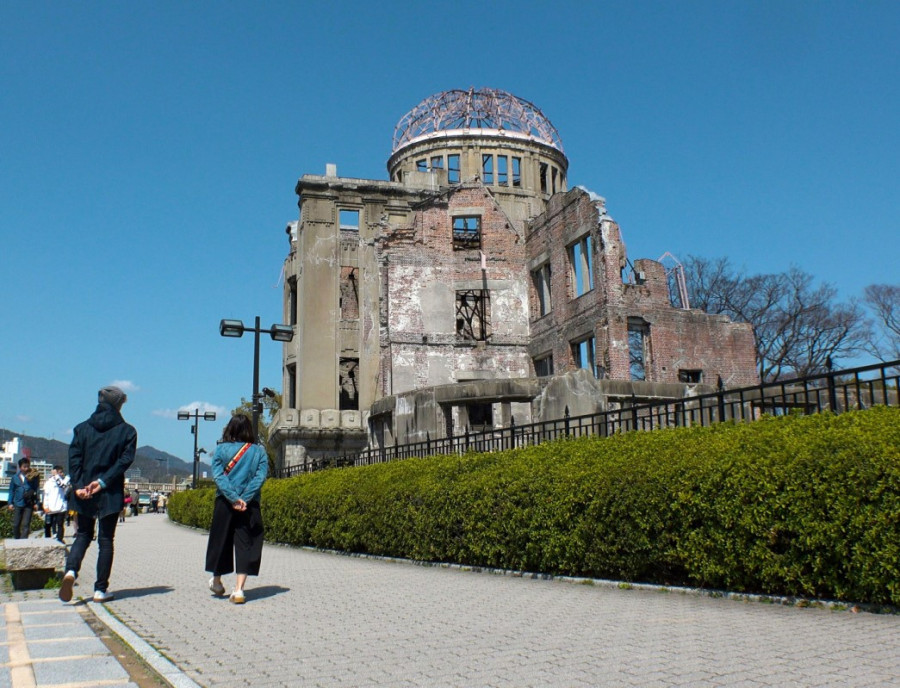Columns
Of death and macabre tourism
The cremation site in Pashupatinath temple could be a remarkable attraction of dark tourism in Nepal.
Mukesh Dangol
Something unusual is gaining attention in the tourism industry nowadays. Travellers want to experience the vibe of death and tragedy, resulting in the emergence of a unique form of tourism, known as “dark tourism”. Dark tourism is the act of venturing into some of the world’s unhappiest places—the phenomenon of travelling to the sites associated with death, tragedy, suffering and the macabre. These destinations, primarily major disaster sites or traumatic events, do not generally fall on the bucket list of many tourists. Feelings of distress, atrocity, sadness and pain characterise such trips.
Dark tourism includes natural, man-made or accidental disasters, wars, genocide, assassination, incarceration and ethnic cleansing. For instance, the brutal terrorist attacks (Ground Zero, New York, USA); horrific radioactive explosions (Chernobyl, Ukraine); the darkest and grimmest sites (Murambi Genocide Memorial, Rwanda); the dreadful atomic bombings (Hiroshima and Nagasaki memorial sites, Japan); and the largest death camps in the history of mankind (Auschwitz concentration camp in Poland) are epitome of dark tourism. Dark tourism has recently become a popular tourism category, especially among adventure-seeking tourists. According to future market insights (FMI), the dark tourism industry was worth $30 billion in 2022 and is predicted to grow to over $36 billion by 2032. There is currently a lack of exact data on the number of dark tourists; nevertheless, the appetite for such destinations is growing, and so are dark tourists.
Dark tourism attraction
Why do people want to visit these god-forbidden places that have witnessed high and hazardous radiation levels, paranormal activity, murders, mass killings, and catastrophic accidents? Most of these places possess anecdotes of philosophical, educational and historical value. Human interest in learning and experiencing new or different things, and more importantly, experiencing something outside of their comfort zone, is a key motivating factor for dark tourists. Moreover, dark tourism can push human minds to their limits. For instance, the local tours of the Fukushima nuclear disaster sites in Japan can be nerve-wracking for many travellers. However, the ghost towns left behind in an exclusion zone are particularly striking to dark tourists.
These dark places can take us back in time and make us feel the pain of the past, help us understand the present and teach lessons for the future. At the individual level, dark tourists often feel grateful after visiting such destinations because they can relive the experiences and people’s misfortunes that they would otherwise never encounter. Visits to abandoned nuclear sites, war zones, armed conflicts and disaster spots can precisely depict the harsh realities of political turmoil, climate calamities and the growing threat of authoritarianism. The crux of the story is that these creepy yet educational hotspots provide many lessons about what it takes to be human. Most importantly, these places reflect who we truly are and help us introspect the evil we are capable of.
The nature of dark tourists ranges from being just backpackers to history enthusiasts and scholars. As such, we can see differences in the motives of such tourists, including contemplation, seeking thrill and adventure, authenticity, self-discovery, pilgrimage, empathy and morbid curiosity. However, the trip to these sites also raises controversies in terms of unethical practices. There have been complaints about disrespectful behaviour, for example, taking selfies on concentration camps sites. Understanding where to draw lines in dark tourism can often be ambiguous. After all, it is based on the commercialisation of grief and the commodification of death and destruction.
Potential sites in Nepal
Tourism is an industry which hunts for authentic experiences. The potential sites and destinations for dark tourists in Nepal can offer distinctive values. The classic and recent one could be the epicentre of the 2015 devastating earthquake in Barpak of Gorkha district. Recalling massive tremors, subsequent destruction and stories of the locals can provide enough adrenaline rush to adventure seekers. Another potential area of dark tourism in Nepal is Liwang of Rolpa district, where a 10-year armed conflict began. The Maoist-led conflict resulted in thousands of deaths, and many others were left missing and disabled. Travelling to these places can bring back memories of armed conflict and lead to thought-provoking considerations. The stories of native people involved in the conflicts can be intriguing as they can provide insights into the social, cultural and historical realities and context of the development of Nepali society.
Similarly, aircraft crash sites such as the Pakistan International Airlines (PIA) memorial park in Lalitpur, the Thai Airways crash site, historical wars and conflicts like the Kirtipur War, Royal Massacre site and associated museums, Kotparba, Bhandarkhalparba and execution sites of our martyrs could be the destinations for dark tourism in Nepal. The cremation site in Pashupatinath temple can be another remarkable attraction, which allows one to witness the death ritual in Hinduism at the cremation ground. The spectators can imbibe and internalise powerful lessons from Eastern philosophies of life and death. Traditional rituals like Gadhimai festival in Terai, sites of past natural calamities such as avalanches in Everest Base camp and other mountains and glacier lake outburst floods (GLOF), landslides and flood sites can also attract dark tourists. The abandoned mountain villages due to climate migration can be another prospect for dark tourism in Nepal.
Nepal is still in the infancy stage of conceptualising dark tourism in its academic and policy discourse. As this new arena of tourism is creating a buzz in the tourism industry worldwide, it is high time Nepal initiated the exploration of this new phenomenon. For now, we can start with the documentation and research on this subset of tourism and lay the stepping stone for the tourism industry.




 17.12°C Kathmandu
17.12°C Kathmandu















